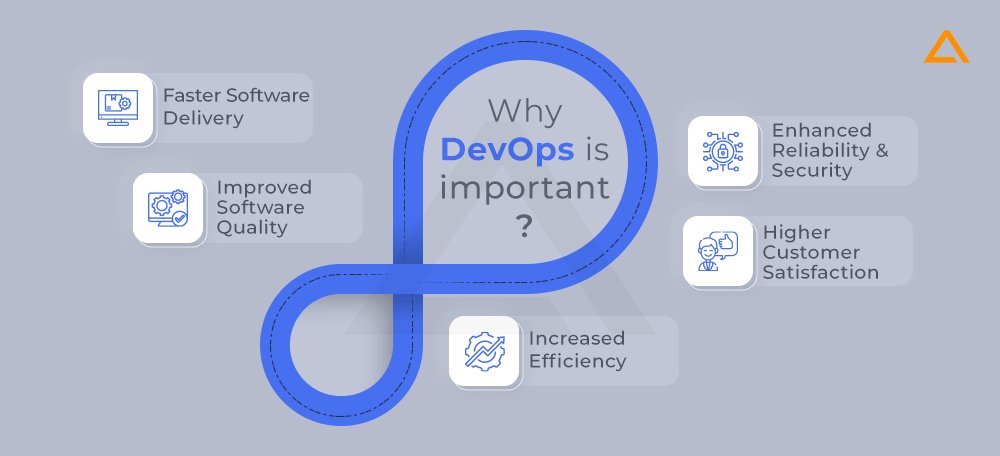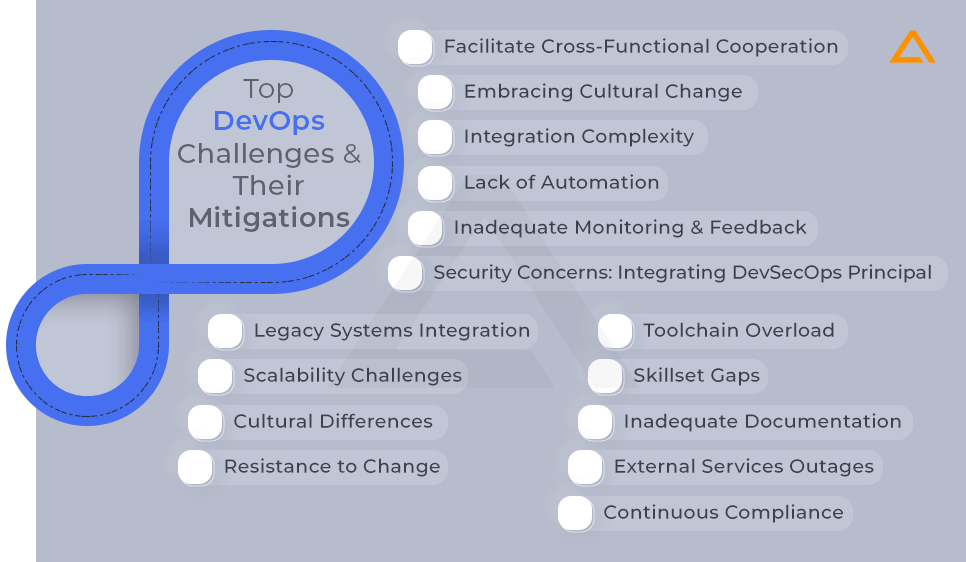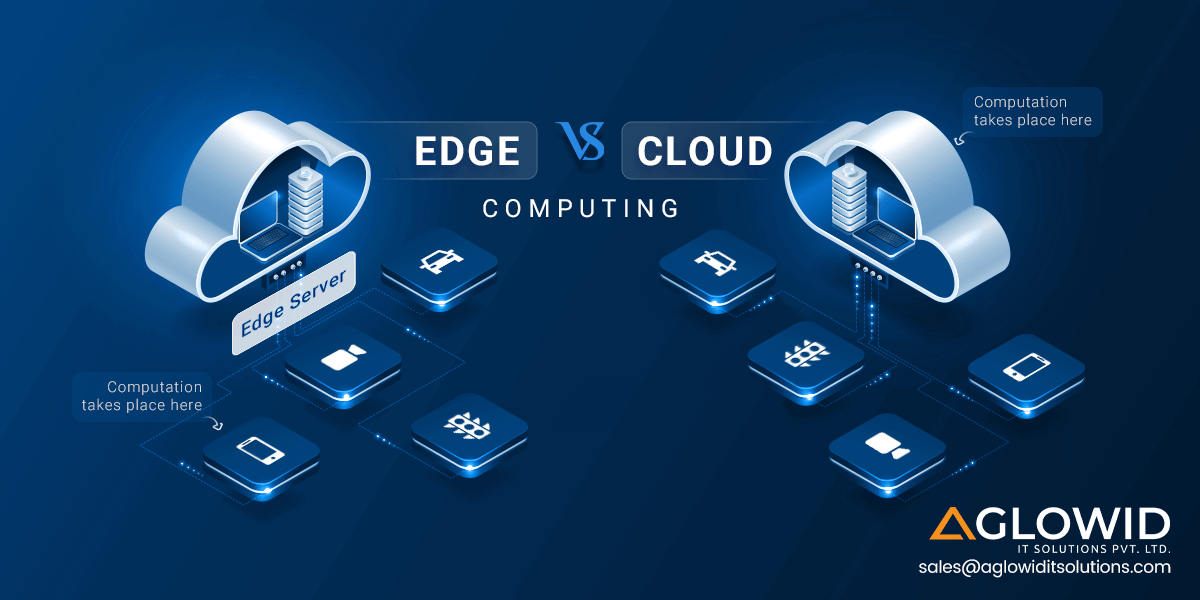Quick Summary:
DevOps has revolutionized software development process, making it faster, more reliable, and offers collaborative workflows. However, the adoption of DevOps is not without challenges. In this comprehensive guide we’ll shed insight into the common DevOps challenges faced by organization, and how to mitigate them.
The development, testing, release, and management of applications is being completely redesigned by DevOps, which is a disruptive force in the software development industry. This approach is essentially being reinvented, and it allows dedicated development teams to collaborate more seamlessly and with fewer errors, leading to faster software delivery—albeit with bugs.
DevOps adoption is not without challenges, though. Organizations that want to fully profit from DevOps must masterfully navigate a route that involves overcoming numerous barriers. These issues range from challenges related to tool integration to profound cultural shifts.
This blog article offers practical ideas to support enterprises on their DevOps journey, while also serving as a roadmap through common DevOps problems. All of the difficulties are broken down, from overcoming the tool’s integration complexity to bringing about a cultural change, and helpful advice is given to make the adoption of DevOps more adaptable and effective. Organizations may fully realize the benefits of DevOps, accelerate development cycles, and improve collaboration by tackling these obstacles head-on.
Before diving into the challenges let’s see why DevOps is important.
📝 In this blog, we’re going to discuss…
Why DevOps is important?
DevOps is the highpoint that every team has been trying hard to reach as organizations shifts their model from traditional approach i.e., waterfall model to Agile vs DevOps methods. Following are the reasons that makes DevOps an crucial element.

Faster Software Delivery
DevOps empowers teams to quickly deliver code changes by utilizing automation, continuous integration/delivery, and enhanced teamwork. In response to shifting market conditions, this enables firms to innovate more quickly.
Improved Software Quality
Quality is ingrained from the start with DevOps thanks to test automation, gradual code releases, and a shared accountability culture. This lowers production faults and issues.
Enhanced Reliability & Security
Performance optimization is achieved by the DevOps team through the usage of infrastructure-as-code and resilient engineering. It has already been decided to implement safety best practices.
Higher Customer Satisfaction
The end-user experience is improved by quicker releases and reduced uptime. Performance analytics and real-time user tracking are also top priorities for DevOps groups.
Increased Efficiency
With the help of DevOps, teams can produce more business value with less human labor by releasing them from automation, cloud utilization, and a lean/agile mindset.
Now that you are aware of the reasons that makes DevOps important, let’s look in the challenges that organizations can face and how to mitigate them.

Fuel innovation, trust reliability
Aglowid DevOps experts:
Hire for success, tailor your journey 🚀
Top DevOps Challenges and Their Mitigations
In software development, DevOps has introduced the efficiency & collaboration, but not without its challenges. Let’s navigate through the DevOps Challenges organization faces and offers practical strategies to overcoming them.

Facilitate Cross-Functional Cooperation
Challenge: Collaboration and progress are hampered by the silos that traditional team structures produce. Teams find it challenging to function well in these solitary settings because they impede the flow of ideas. For effective collaboration to be achieved in the DevOps context, these silos must be broken down.
Solution: Establish cross-functional teams, promote open channels of communication, and cultivate a feeling of shared accountability to promote a common culture. Remove organizational obstacles to facilitate simple cooperation.
Embracing Cultural Change
Challenge: Since stakeholders and individuals are hesitant to accept the required cultural shift, the implementation of DevOps methodologies frequently encounters resistance. It takes open discussion, thorough training, and clear communication to overcome this opposition and to highlight the benefits for productivity, efficiency, and ongoing development.
Solution: Teams should be made aware of the advantages of DevOps, changes should be made gradually, and productivity gains should be highlighted. Acknowledge that changing a culture is a journey, and develop an improvement-oriented mindset.
Integration Complexity
Challenge: A unique integration problem is presented by the many DevOps tool chains. Successful integration is challenging because processes automatically and continuously adapt. Prioritizing connection, purchasing DevOps tools with robust integration capabilities, and making plans to guarantee a cohesive DevOps toolkit are all necessary for organizations.
Solution: It is important that you invest in automation of integration procedures, keep thorough documentation, and select technologies with robust integration capabilities. Assemble a cohesive and well-integrated toolchain by making sure all the tools communicate with one other fluently.
Lack of Automation
Challenge: The speed and dependability that DevOps promises are impeded by manual implementation. There are risks, delays, and complexities associated with using manual processes. One of the key principle of DevOps is automation, which is necessary to accomplish the quick and dependable operations that are necessary for its success.
Solution: Implement Infrastructure as Code (IaC) to expedite deployment procedures, give priority to automation of repetitive chores, and use tools like Ansible, Puppet, or Jenkins to optimize workflow. To boost productivity, automate wherever it is practical.
Inadequate Monitoring & Feedback
Challenge: Efficiency problems may arise from a narrow view of development and execution. It’s hard to see obstacles and deal with problems when you have poor vision. Improved system efficiency and more visibility are achieved through DevOps’ emphasis on continuous monitoring and reactivity.
Solution: Establish precise metrics, put in place reliable monitoring mechanisms, and promote ongoing feedback loops. Utilize predictive analytics with artificial intelligence to quickly detect and resolve problems, guaranteeing the general dependability of the system.
Security Concerns: Integrating DevSecOps Principal
Challenge: Security frequently takes a backseat in DevOps Companies that move quickly. The frequent updates and quick deployment cycles may overlook thorough security precautions. Ensuring security is smoothly woven into the development lifecycle becomes contingent upon integrating DevSecOps methods.
Solution: The development lifecycle can be made more secure by implementing DevSecOps techniques. The software development process should be reinforced by security coding practices, and regular and automatic security audits should be carried out.
Legacy Systems Integration
Challenge: The mismatch between modern DevOps practices and outdated systems is a hurdle. In order to properly bridge the gap between outdated systems and the automated and agile methods of DevOps, modernization techniques and considerable thought must be given to them.
Solution: Adopt coexistence tactics, leverage APIs for integration either using Best API Integration Tools or not when feasible, and upgrade systems gradually. To bridge the gap between the outdated and contemporary systems, take containerization into consideration for legacy applications.
Scalability Challenges
Challenge: Scalability is a problem when teams and applications grow larger. Operational problems may arise from improvements that upset the current infrastructure. For DevOps to successfully handle scalability issues, cloud-native technologies must be implemented along with scalable architectures and container orchestration tools like Kubernetes.
Solution: For effective scalability, adopt cloud-native technologies, design scalable systems, and make use of container orchestration tools like Kubernetes.
Cultural Differences
Challenge: A mismatch between organizational culture and DevOps principles gives rise to the difficulty. Successful integration and DevOps adaptation frequently need a planned cultural transformation since it conflicts with traditional habits.
Solution: The answer is to encourage a DevOps culture by offering leadership commitments, training courses, and rewards for teamwork and shared accountability.
Resistance to Change
Challenge: A committed development team or individual inside your firm may be the source of resistance to the implementation of DevOps. It is necessary to confront societal anxieties and advance the proper perspective for DevOps procedures in order to overcome this hurdle.
Solution: Establish a culture that encourages value-added change, mentorship, and continuous education programs as means of prioritizing cultural development. To align with DevOps principles, promote and commemorate cultural transformation.
Toolchain Overload
Challenge: Using a wide range of DevOps tools can lead to confusion and complexity.
Solution: Evaluate and optimize the tool chain on a regular basis, getting rid of unneeded instruments. Put an emphasis on tool integration and communication to streamline the procedure. To guarantee that the equipment is used properly, provide extensive training.
Skillset Gaps
Challenge: Teams might not have the know-how to execute DevOps successfully.
Solution: Investing in mentorship, training, and skill development programs is the solution. To bridge the organization’s skills gaps, promote cross-functional learning and cooperation.
Inadequate Documentation
Challenge: Incomplete documentation may make it more difficult to convey information.
Solution: Give policies, processes, and best practices the highest priority when it comes to documentation. Create a mailbox-equipped repository and urge team members to contribute on a regular basis. Make sure information is easily accessible by utilizing collaborative tools.
External Services Outages
Challenge: The organization may run dangers if it depends on outside services.
Solution: Create backup plans in case of service interruptions, apply thorough analytics to external services, and diversify resource bases if possible. Manage and reduce any risks by having excellent communication with providers.
Continuous Compliance
Challenge: It is difficult to ensure keeping compliance with regulatory standards.
Solution: Automated systems should incorporate compliance checks. provides visibility into compliance status, integrates compliance teams early in the development lifecycle, and continuously monitors and updates compliance procedures using technologies
Wrapping Up!
To sum up, a simpler and more effective software development lifecycle can only be attained by tackling and resolving DevOps difficulties. You can also opt for developers from a reputable IT Staff Augmentation Company which help you with your DevOps Projects. Organizations are clearing the path for a DevOps journey that changes by accepting cultural shifts, prioritizing automation, streamlining tool chains, and managing silos. In order to stay ahead in dynamic terrain, constant learning, transformation, and process implementation are required. Since the use of DevOps has become essential to contemporary development processes, teams can flourish in a quickly changing technological landscape by efficiently managing complexity, which also guarantees increased productivity and communication.
FAQs
- Faster delivery of features
- Improved product quality
- Enhanced ability to innovate
- Higher customer satisfaction
- Rapid feedback and fixes




 Say
Say